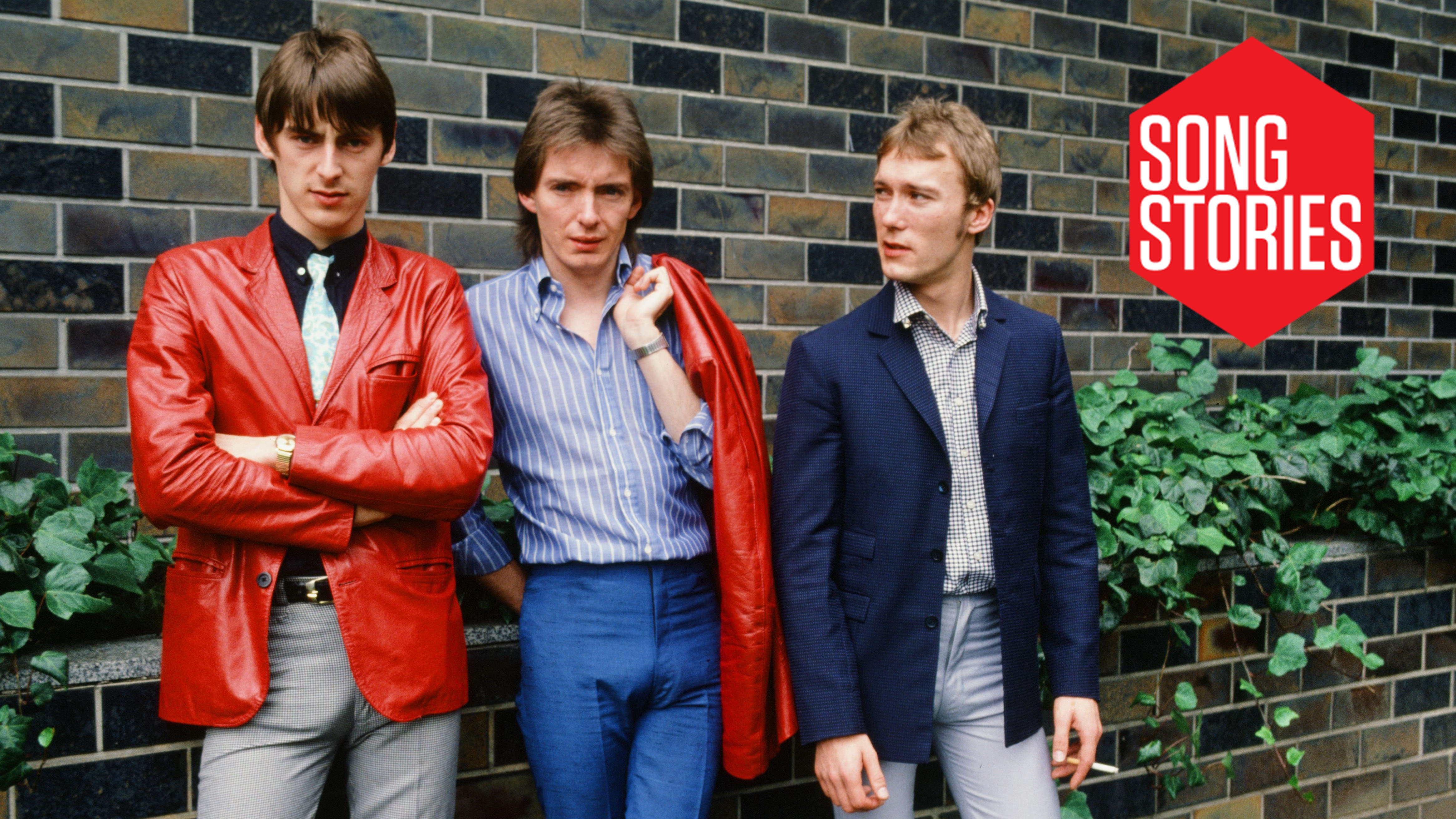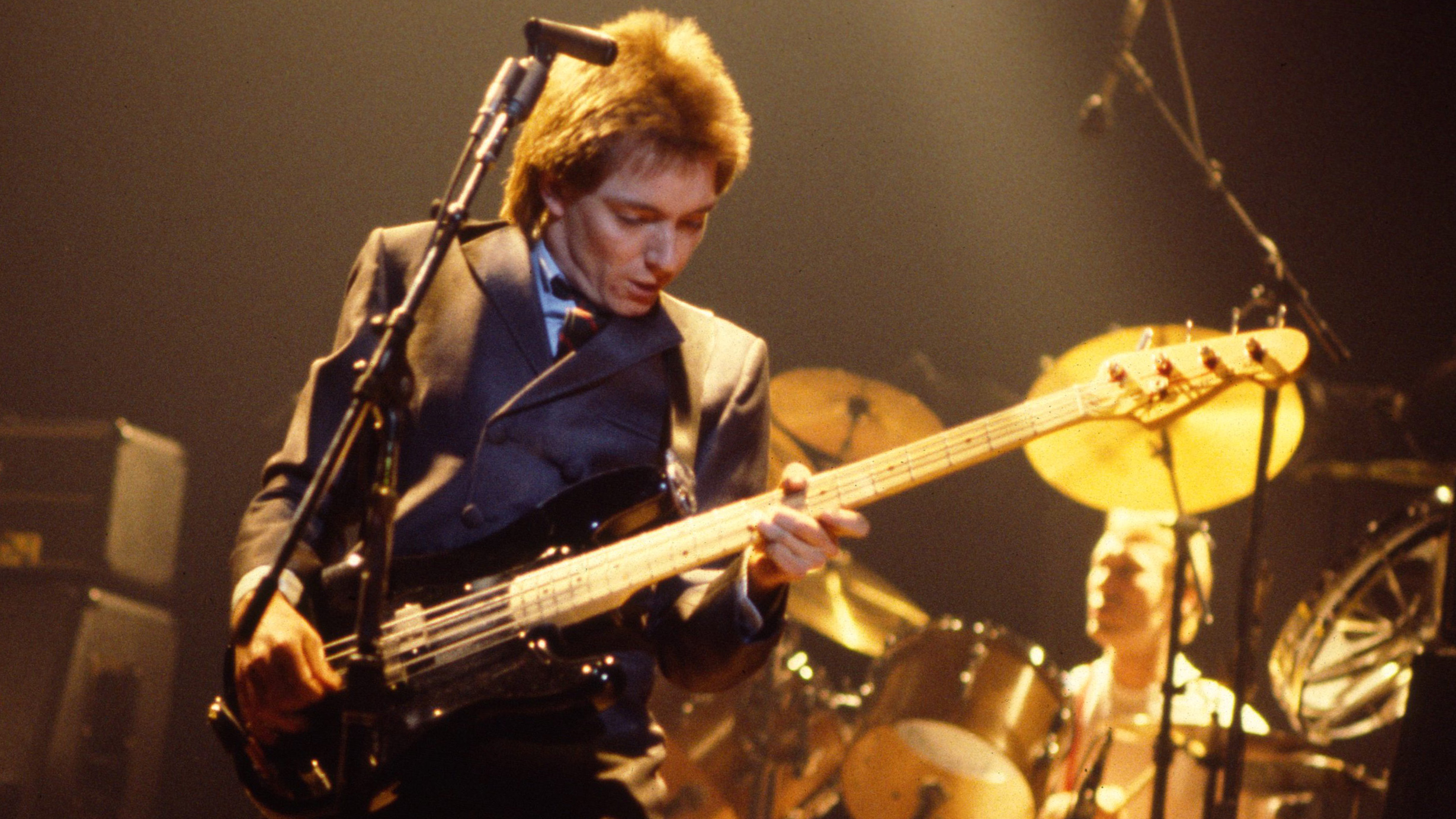Bassist Bruce Foxton on the story of The Jam's That's Entertainment: “It was a bit of a departure for us, because it was acoustic”
The birth and recording of a British classic

By the time Paul Weller penned That’s Entertainment in 1980, The Jam were already established as one of the biggest bands in the UK. Since signing to Polydor in 1977, the prolific mod icons had enjoyed three Top 20 albums and six Top 20 singles. That’s Entertainment appeared on their fifth album, 1980’s Sound Affects, which would rise to a peak of No. 2 on the UK album charts.
However, That’s Entertainment was never issued as a UK single before the band split in 1982, perhaps because Polydor deemed its acoustic approach too out of kilter with the plugged-in sounds for which The Jam were renowned. Nonetheless, loyal fans of the band imported non-UK pressings of the song by the thousand, leading to a No. 21 chart placing in February 1981. To this day, it remains one of the best-selling imports in UK chart history.
Paul Weller wrote the bare bones of the song in rapid fashion after an evening down the pub. “As I recollect, it was a very easy song to write,” Weller told BBC Radio 2 as part of its Sold On Song series, “because all the images were right in front of me, really, right down to the police car going past at night and the damp on the walls. My girlfriend and me used to live in this little flat in Pimlico at the time. It’s not as if we were going through hardships, but they were just very strong images and they were easy to write in that sense.
"As the story goes, I came home from a pub and wrote it in like 10 or 20 minutes or something; just kind of dashed it all off, then got the music together afterwards," added Weller. "I can't remember when I did that – maybe days later or a week later. It’s got a very simple chord pattern and only four chords in it, so the main flow of the song is the words, really.”
Bruce Foxton, The Jam’s bassist, still remembers when Paul first played the song to him. “[Paul] pretty much had it as you hear it,” Bruce told Total Guitar in 2011. “He sat down and played it on acoustic guitar. My first impression was that it was a great storyline. I loved the lyric, like I do most of Paul’s lyrics. As far as I’m concerned, he’s on a par with Ray Davies – just a great storyteller and you don’t have to have an IQ of 500 to know what he’s on about!”
The simple-yet-subtle arrangement came together naturally too. “It was a bit of a departure for us, because it was acoustic,” explained Foxton to Total Guitar. “The arrangement was quite minimal, but I think it works, and it suited the track and didn’t detract from the feeling of the song, the sentiment of the acoustic guitar and the lyric. The drums are very sparse and then there’s just that little run of a bass line. We didn’t want it to get too busy.”
Several demos have been unearthed over the years, including one featuring Polydor recording engineer Peter Wilson on drums (Wilson would later become The Jam and The Style Council’s producer). Weller, who lived in London at the time, would often demo early versions of songs at Polydor’s studios in Stratford Place, just off Oxford Street. “It was very convenient for Paul and wasn’t such a trek for him [Foxton and drummer Rick Buckler still lived in Woking],” said Bruce. “There’s quite a few demos knocking around where Paul just went in by himself or played with the crew.”
Get the MusicRadar Newsletter
Want all the hottest music and gear news, reviews, deals, features and more, direct to your inbox? Sign up here.
The Sound Affects album was laid down at Richard Branson’s Townhouse Studios in Shepherd’s Bush, London. Bruce Foxton can’t remember much about the sessions, but The Jam’s recordings typically never took long to nail. It’s likely that Paul Weller recorded the rhythm guitar tracks on an Aria acoustic, while the backwards guitar overdub was probably one of his many Rickenbackers.
By 1980, Bruce Foxton was a devout Fender Precision man. “I switched over from Rickenbacker around the time of All Mod Cons [The Jam’s third album],” explains Foxton. “And I was using a Marshall 100-watt head and two 4x12s, but obviously I didn’t use both of them in the studio, because there was no need. My sound was usually a combination of DI and amp.
Since 2007, Foxton has been touring with From The Jam, playing Jam-dominated sets of classic songs to crowds the world over. That’s Entertainment is always a highlight, although the members experimented by playing it in a more punky, revved-up manner.
“Russ [Hastings, lead singer and guitarist of From The Jam] heard Paul doing it electric somewhere,” Bruce told Total Guitar in 2011. “And so Russ brought it to the table and said, ‘Let’s just rock it up a bit! Let’s do it more electric.’ So now he starts up with the chuggy electric guitar and then the band are in full tilt from the first verse. It’s exciting that way and it makes it fresh…
Originally, I thought, ‘Blimey, what are the fans going to make of this?’ That’s Entertainment is a fantastic song and probably one of the main highlights in the set. When we launch into it, the crowd start singing straight away. But they seem to love it the way we’re doing it at the moment too, and it means they can throw themselves about a bit more I suppose!”
"Reggae is more freeform than the blues. But more important, reggae is for everyone": Bob Marley and the Wailers' Catch a Fire, track-by-track
“Part of a beautiful American tradition”: A music theory expert explains the country roots of Beyoncé’s Texas Hold ‘Em, and why it also owes a debt to the blues










